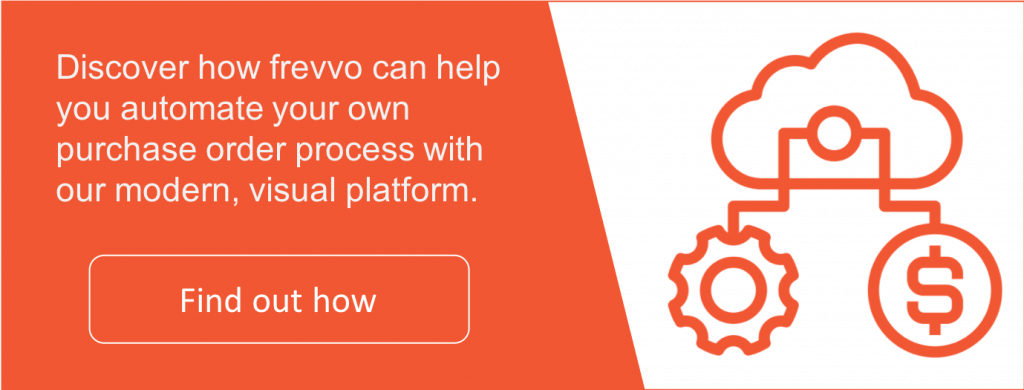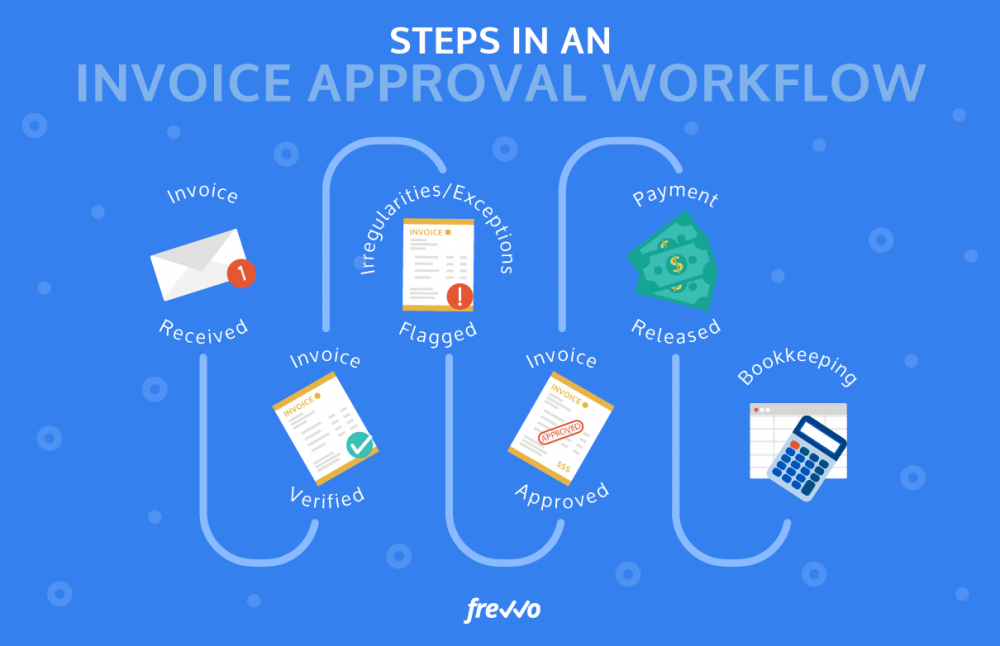People often confuse purchase orders (also known as POs) and invoices or use them interchangeably. In fact, they are two different documents that each serve their own purpose. Both are key elements of the procurement process for any business.
But what’s the difference between the two – and when would you use a PO vs an invoice?
And, how can you use workflow automation to streamline invoice processing as well as purchase order as well as invoice processing in your organization through workflow automation?
Read on to find out.
Want to jump ahead? Click here:
- What is a purchase order?
- Why do you need a purchase order?
- How does a purchase order work?
- What is an invoice?
- What is the purpose of an invoice?
- How does an invoice work?
- What is the difference between an invoice and a purchase order?
- Why do you need both documents in the procurement process?
- Streamline your procurement processes
What is a purchase order?
A purchase order (PO) is a document that clearly details the products or services your company plans to purchase from a vendor.
Buyers fill out POs and send them to the vendor, not the other way around.
The document outlines everything both parties need to know about the items being procured, including payment terms. There is no room for interpretation in a proper PO form. It will normally include:
- The PO date and a unique PO number for use by accounting.
- The vendor’s contact information including payment details.
- Line items for each item being procured including unit price, quantity and subtotal and a grand total for the PO.
- Signatures of each company representative as specified by internal business norms.
- Terms and conditions including relevant payment and delivery terms.
A typical purchase order might look like this:
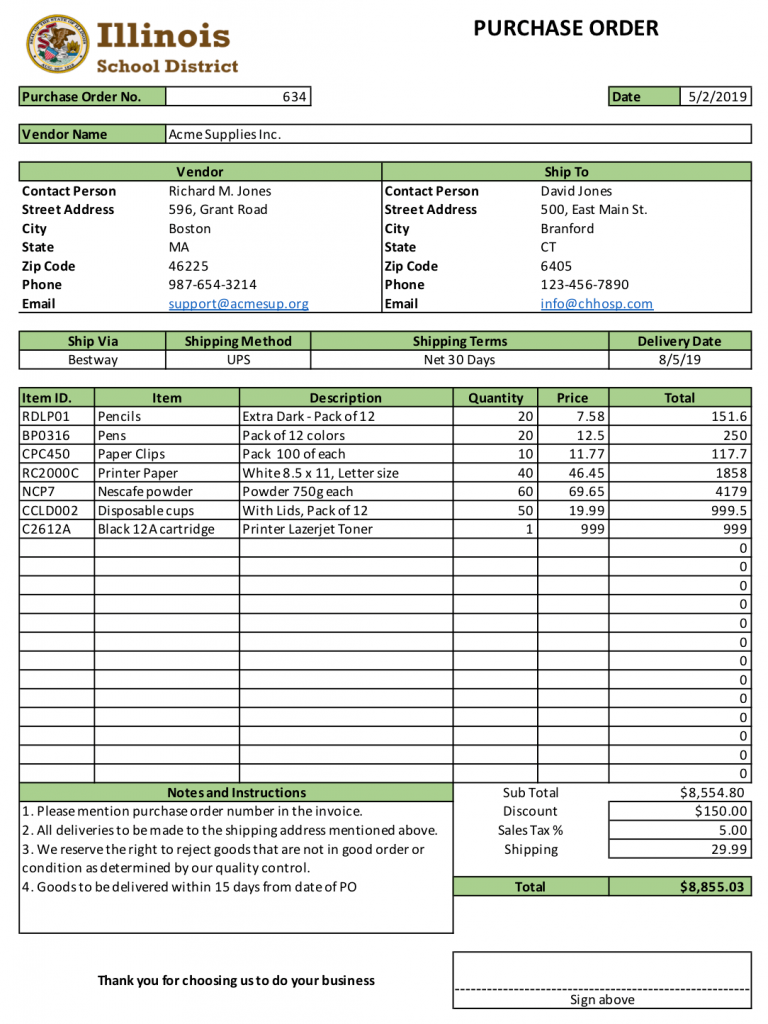
Why do you need a purchase order?
- They facilitate clear expectations – POs are a formal way of clarifying the procurement process for all parties involved. Expectations are clear for everyone, and when a disagreement occurs, the PO serves as a reference to clear up any miscommunications.
- They enable companies to control spending – When an employee within an organization sees a need for a product or service, they can fill out a PO by themselves, get approval from their manager, send it over to the vendor, and finally to their accounting department for payment. When this process is automated using invoice approval software, everyone stays in the loop.
- They help with budgeting – By gaining access to POs, the accounting department can plan accordingly for the future purchases to come – before they get surprised by the arrival of an unexpected invoice.
- They are legally binding – In case of a disagreement with the supplier or a financial audit, POs provide legal cover. In fact, a federal court ruled in Virginia that purchase orders reflect an enforceable contract between two parties. The purchase order process will have an explicit vendor acceptance step.
How does a purchase order work?
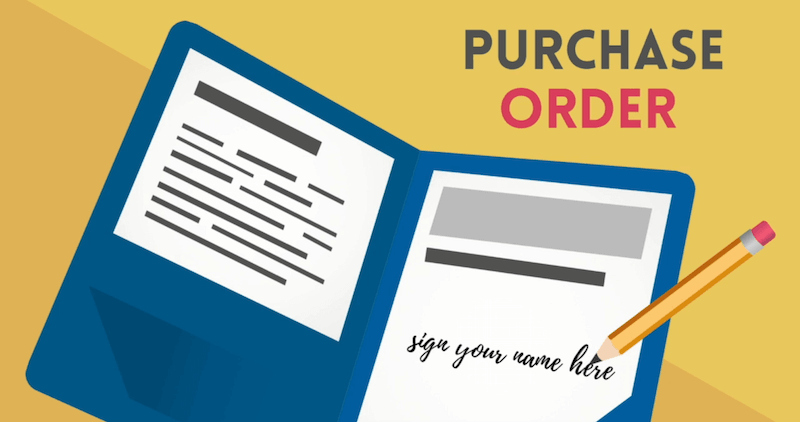
Let’s take the example of a law firm with an office administrator. The office administrator ensures that the firm always has sufficient office supplies.
Afterwards, the administrator files this for approval to their manager. If the manager signs off on the PO, the administrator sends the signed document to Acme Office Supplies to begin the procurement process. The law firm’s accounting department also receives a copy so that they can budget in advance for this purchase.
What is an invoice?
An invoice is a document that requests payment in exchange for a product or service. A formal procurement process may not be required for invoicing – for solo practitioners, a discussion with purchasing might suffice.
Vendors send invoices. They may include:
- Name and price of product or services delivered
- Total amount due
- Payment schedule
- The vendor’s contact information
- Discounts (if applicable)
A typical invoice can look like this:

What is the purpose of an invoice?
- They let vendors collect payment – The PO itself isn’t a prompt for payment – instead, it informs what the vendor needs to deliver, and thus, what will be shown on the invoice. In most cases, the vendor will not receive payment without first sending an invoice.
- They help companies manage payments and cash flow – Invoices detail exactly what you are paying for and how much you are paying. With this data, companies can track payments and analyze expenditures in a formal way.
- They provide legal protection – On its own, an invoice is not a legally binding contract. But, it might be part of a legally binding agreement when the other essential elements of a contract are met.
They provide written documentation for audits – Invoices serve as proof of exactly what your business paid for in case of an audit.
How does an invoice work?
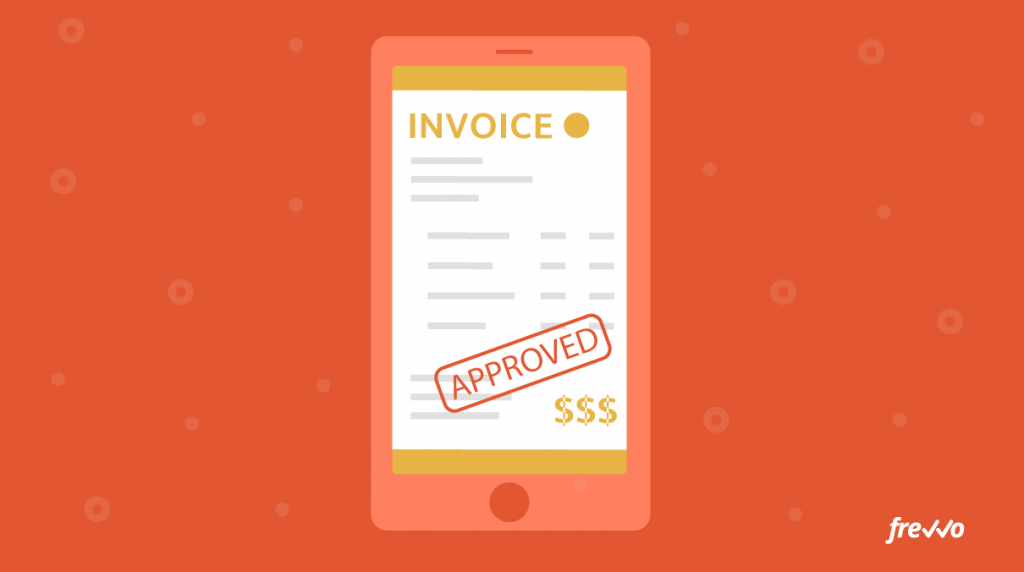
Let’s bring back the example of our law firm that has sent a PO to Acme Office Supplies.
The law firm’s accounting department receives the invoice and pays on the specified date. Because they also received a PO beforehand, they had planned for the arrival of this invoice, they can corroborate it with the original PO, and thus don’t have any budgeting issues to clear the payment.
What is the difference between an invoice and a purchase order?
Here’s a quick recap of both documents:
| Feature | Purchase Order | Invoice |
| What is it? | Confirmation of an order | Request for payment |
| Who creates it? | Buyer | Vendor |
| When is it sent? | When an order needs to be placed for goods and/or services. | When the goods and/or services in the order have been delivered. |
| Who receives it? | Vendor | Buyer |
| What info does it contain? | – Date of PO creation – PO number – Name of buyer – Description of items or service being purchased – Number of items and price – Payment terms – Billing and shipping addresses – Delivery date | – Date of invoice creation – Invoice number – Vendor contact information – Buyer billing and shipping addresses – Description of items or services being purchased – Number of items and total price – Discounts – Payment schedule – Other terms, such as late fees |
Why do you need both documents in the procurement process?
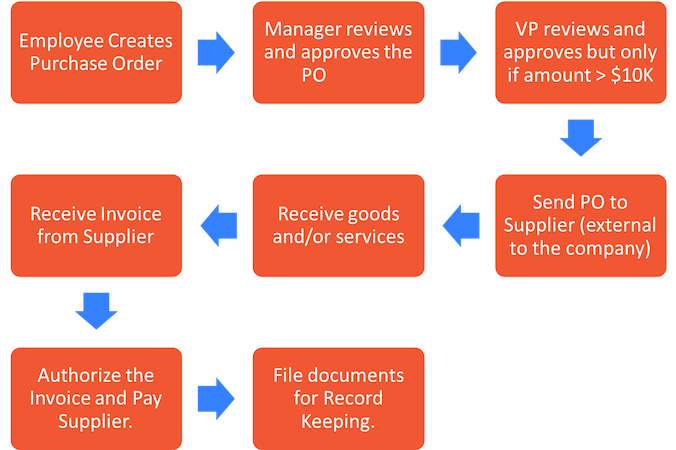
Many businesses don’t use POs when a need arises for a product or service. Instead, they discuss a needed service by phone or email, then document the money trail with an invoice.
So why can’t you just use invoices instead of having so many types of documents?
POs ensure that everyone is on the same page before the vendor ships any items or actually performs work and bills the purchaser. It’s a protection blanket for both parties involved.
If a miscommunication happens and this isn’t clarified before the delivery of the service, you can end up goods with an invoice that wasn’t originally what you thought you signed up for.
Let’s say Acme Office Supplies received a phone call from the law firm’s office administrator stating that they need fifteen crates of paper. As we all know, phone communications can easily get confused. What if Acme Office Supplies understood FIFTY instead of FIFTEEN?
If no PO was created, the law firm might suddenly receive a shipment and an invoice that is nearly four times as high as what they were expecting. And now, they have no written proof of the terms both parties agreed to. It’s a case of he-said-she-said.
In short, purchase orders define the terms of the sale before the sale occurs, and invoices confirm fulfillment of the order and that a payment is due in consequence. Overall, including both POs and invoices are key to avoid conflict and ensure everyone gets their dues.
Streamline your procurement processes
Running a business in itself is already challenging enough. You want your employees to focus on delighting customers and on strategic matters that will directly impact your bottom line. You don’t want them chasing paperwork for day-to-day activities like procurement.

Every minute that your accounting department employees spend on a badly optimized procurement process is a minute they could be spending on the tasks they do best – the tasks that truly matter for your business.
Global trends strongly favor companies that have embraced automation. Automation of these everyday procurement processes can give you a major advantage in today’s fast-paced business ecosystem.
The Bottom Line
Purchase orders and invoices are crucial documents that are part of every company’s procurement process. It’s important to understand the similarities and differences, and why these documents are both important.
A streamlined and efficient procurement system that utilizes electronic purchase order forms and automates invoice processing can help your business run more smoothly and focus on what you need to do to stay competitive.
With electronic forms, your POs and invoices and work together in a single pipeline that minimizes paperwork and miscommunications.
